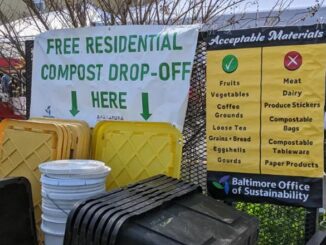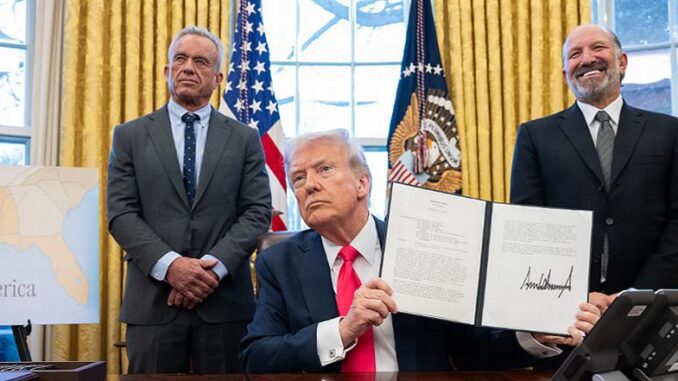
WASHINGTON, DC, May 1, 2025 (ENS) – The current U.S. President, Donald J. Trump, was inaugurated on January 20, 2025, the first day of his second term as President. His 100th day in office was April 30, 2025. This chronology documents the most important of his presidential actions that have impacted the environment of the United States in his first 100 days.
On Day 1, January 20, 2025, President Trump immediately withdrew the United States from the Paris Agreement on climate under the United Nations Framework Convention on Climate Change. He revoked the U.S. International Climate Finance Plan and any financial commitment to it.
Although Trump had also pulled the country out of the Paris Agreement during his first term (2017-2021), environmental organizations warned of dire consequences of this second withdrawal.
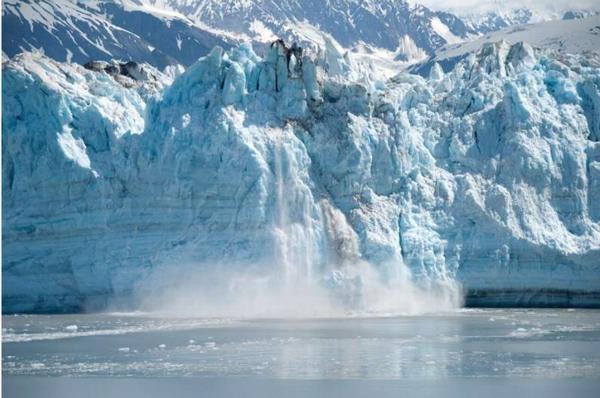
At the Environmental Defense Fund headquarters in New York, long-time President Fred Krupp and Executive Director Amanda Leland issued a warning, “The U.S. cannot exit the global energy innovation race in the misguided and nostalgic pursuit of dirty and finite fossil fuels. It’s a dead end. For America to remain competitive and prosper while reducing its climate pollution, the only path forward is a swift and urgent transition to abundant clean energy.”
Releasing its 2024 annual report on the effects of climate change, the World Meteorological Organization had a warning of its own. “The clear signs of human-induced climate change reached new heights in 2024, which was likely the first calendar year to be more than 1.5°C above the pre-industrial era, with a global mean near-surface temperature of 1.55 ± 0.13 °C above the 1850-1900 average.”
“This is the warmest year in the 175-year observational record. The State of the Global Climate 2024 report underlined the massive economic and social upheavals from extreme weather and the long-term impacts of record ocean heat and sea-level rise,” the WMO said.
Yet, on his first day in office, President Donald Trump rescinded 78 of his predecessor President Joe Biden’s executive orders. Twelve of them affected the environment.
Saying that “Climate extremism has exploded inflation and overburdened businesses with regulation,” Trump rescinded Biden’s Executive Order 13990 of January 20, 2021 (Protecting Public Health and the Environment and Restoring Science To Tackle the Climate Crisis).
Then the newly inaugurated President ordered a 60-day pause on approvals for all “renewable energy development” on U.S. public lands.
Trump also rescinded these Biden executive orders, covering all four years of the Biden presidency:
- Executive Order 14007 of January 27, 2021 (President’s Council of Advisors on Science and Technology).
- Executive Order 14008 of January 27, 2021 (Tackling the Climate Crisis at Home and Abroad).
- Executive Order 14013 of February 4, 2021 (Rebuilding and Enhancing Programs To Resettle Refugees and Planning for the Impact of Climate Change on Migration).
- Executive Order 14027 of May 7, 2021 (Establishment of the Climate Change Support Office).
- Executive Order 14030 of May 20, 2021 (Climate-Related Financial Risk).
- Executive Order 14037 of August 5, 2021 (Strengthening American Leadership in Clean Cars and Trucks).
- Executive Order 14057 of December 8, 2021 (Catalyzing Clean Energy Industries and Jobs Through Federal Sustainability).
- Executive Order 14082 of September 12, 2022 (Implementation of the Energy and Infrastructure Provisions of the Inflation Reduction Act of 2022).
- Presidential Memorandum of March 13, 2023 (Withdrawal of Certain Areas off the United States Arctic Coast of the Outer Continental Shelf from Oil or Gas Leasing).
- Executive Order 14096 of April 21, 2023 (Revitalizing Our Nation’s Commitment to Environmental Justice for All).
- Presidential Memorandum of January 6, 2025 (Withdrawal of Certain Areas of the United States Outer Continental Shelf from Oil or Natural Gas Leasing).
President Trump’s Actions: February 2025 and the Valentine’s Day Massacre
On February 3, President Trump’s 15th day in office, after he directed a “pause” in U.S. assistance to Ukraine to pressure President Volodymyr Zelenskyy to negotiate ending the war with Russia, Trump offered military and intelligence help to Ukraine in exchange for rare earth minerals used in smartphones, computers, wind turbines and electric vehicles. He repeated this demand on February 7.
Also on February 3, Trump ordered that the United States government conduct a review of its membership in UNESCO, the United Nations Educational, Scientific and Cultural Organization.
“The review will include an evaluation of how and if UNESCO supports United States interests, and it will include “an analysis of any anti-Semitism or anti-Israel sentiment within the organization,” the White House said.
Founded in 1945 after World War II, UNESCO is a specialized agency of the UN that aims to promote “world peace and security through international cooperation in education, arts, sciences and culture.” The United States accepted the UNESCO convention on December 7, 1973, joining what are now its 194 Member States Parties across the globe.
UNESCO maintains the World Heritage list of natural and cultural sites considered to be of outstanding value to humanity under the Convention concerning the Protection of the World Cultural and Natural Heritage, adopted by UNESCO in 1972. World Heritage sites belong to all the peoples of the world, not only to those who occupy the territory on which they are located.
There are 26 World Heritage Sites in the United States, including 12 national parks and the Statue of Liberty.
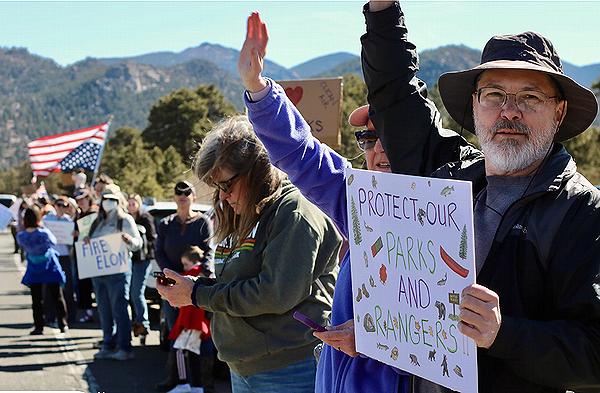
of KUNC courtesy Wyoming Public Radio)
The World Heritage Committee, which makes decisions about adding sites to the World Heritage List, is made up of 21 countries, elected on a rotating basis from among the 194 World Heritage Convention member countries. The List is maintained by the World Heritage Centre, staffed by UNESCO in Paris.
The conservation and protection of World Heritage sites require substantial financial resources.
With income from both assessed and voluntary contributions from UNESCO’s 194 Member States Parties, the World Heritage Fund provides about US$3 million a year to support activities requested by States Parties.
The Trump administration’s UNESCO review will be led by the Secretary of State Marco Rubio.
Trump has ordered that UNESCO be reviewed with the U.S. Ambassador to the United Nations, but currently that position remains unfilled after he withdrew his nomination of New York Congresswoman Elise Stephanik to retain her seat in the narrowly divided House of Representatives.
Still, the review must be completed within 90 days of the date of the president’s order, which is Monday, May 5, 2025.
As of April 30, the highest-ranking U.S. representative in place at the UN is the former Number 2 in the U.S. Ambassador’s office, career diplomat Dorothy Shea, who is Acting U.S. Representative to the UN. On May 1, the president removed his first national security adviser, Mike Waltz, from that job and nominated him as UN Ambassador, a position that requires Senate confirmation.
On February 7, Trump’s 19th day in office, he ordered a review of funding for the 2022 climate law known as the Inflation Reduction Act. This is the most complete and effective climate legislation in U.S. history. It offers funding, programs, and incentives to accelerate the transition to a clean energy economy and expected to drive deployment of new clean electricity resources.
The Inflation Reduction Act includes tax incentives and rebates for purchasing energy-efficient technologies like heat pumps and solar panels, as well as for clean vehicles.
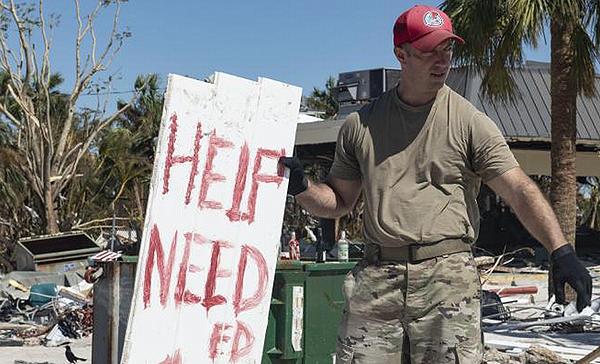
The legislation provides billions in investments towards clean energy and climate-related projects, including funding for clean energy jobs and training programs.
The law invests in domestic energy production and manufacturing, including expanding domestic clean technology manufacturing and reducing methane emissions.
But Trump’s EPA administrator Lee Zeldin sent a memo to EPA employees that said President Biden’s administration had “egregiously” mishandled the funds. This memo provided the justification for Trump’s funding review.
February 12, Trump’s 24th day in office, was busy one on the environmental front. He began to roll back regulations that required companies to disclose their impact on the climate.
Also on February 12, the president planned a $400 million order for electric armored vehicles from Tesla, the electric vehicle company co-founded by his largest campaign donor, Elon Musk. But on that same day, Tesla’s name was removed from a State Department document of future vehicle purchases after the planned buy was publicly reported.
And still on February 12, Trump nominated an oil and gas executive to run the Bureau of Land Management, BLM, which manages 245 million acres of public lands and 700 million acres of the minerals under the surface.
Trump is hoping to increase U.S. oil and gas drilling even over President Biden’s levels. Under Biden, the United States produced “more crude oil than any nation at any time,” according to a U.S. Energy Information Administration report posted on April 29, 2025 – more than the next two best producers – Russia and Saudi Arabia.
Trump loyalist Kathleen Sgamma, president of the oil industry trade group Western Energy Alliance based in Colorado, was nominated as BLM director. An MIT graduate, Sgamma advocates for the fossil fuel industry, seeking fewer drilling restrictions on public lands that produce about 10 percent of U.S. oil and gas.
“We’ve seen a dramatic shift from an administration that imposed restrictive policies, limited permitting, and threatened energy projects, to one that is actively supporting development,” Sgamma said on April 29. “In 100 days, President Trump has set the tone to cut excessive regulations and get back to permitting oil and natural gas projects. On Day One, he signed multiple executive orders and sent a clear message that the government will no longer hinder our nation’s energy economy through overregulation. Every week since, we’ve seen targeted actions that tackle roadblocks put in place by the Biden administration.”
If she had been confirmed by the Senate, Sgamma would have been an architect of Trump’s drilling agenda beside Interior Secretary Doug Burgum, who leads the new National Energy Council that Trump says will establish U.S. “energy dominance” around the world.
Trump chose Valentine’s Day to establish the National Energy Dominance Council to promote U.S. energy sources.
Sgamma co-wrote the oil and gas section of the “Project 2025 Mandate for Leadership,” the roadmap for today’s Republican Party. The policy guidebook calls for reversing President Biden’s “war on fossil fuels” by ending laws and regulations intended to slow climate change and promote oil and gas leasing on public lands.
But Sgamma withdrew her name from nomination as BLM Director on April 10, after a critical memo she wrote to her organization about the January 6, 2021 attack on the U.S. Capitol.
Today the position of BLM Director remains vacant.
On Valentine’s Day, February 14, Day 26 of his second term, President Trump planned to tear out the White House Rose Garden and replace it with a patio similar to the one at Mar-a-Lago, his home in Florida.
But that was just a quick preview. During what has come to be called the Valentine’s Day Massacre, Trump issued orders to fire thousands of workers at the Environmental Protection Agency, the Department of Agriculture, and the Department of Energy, all agencies responsible for the environment of the United States.
Still on Valentine’s Day, Trump and Elon Musk’s Department of Government Efficiency cut about 3,400 workers at the U.S. Forest Service, about 1,000 at the National Park Service, and another 1,000 at the National Oceanic and Atmospheric Administration.
A Forest Service spokesperson told the news outlet ProPublica that about 2,000 probationary employees were fired in February. Forest Service workers said anonymously in March that departmental leadership had listed thousands of additional Forest Service employees who could be soon laid off.
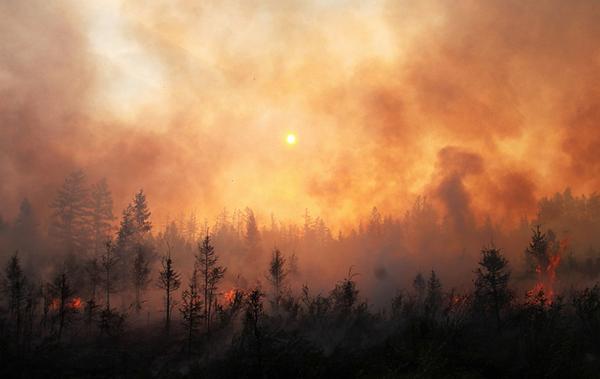
The cuts have affected the Forest Service’s 10,000-person firefighting force. Hiring has slowed as there are fewer employees to get new workers up to speed and people wonder which job titles can be hired. Cuts of support staff who play crucial roles in preventing and battling blazes have led to the cancellation of training programs and prescribed burns.
In early March, an independent federal board that reviews employees’ complaints compelled the Department of Agriculture, the Forest Service’s parent department, to reinstate more than 5,700 terminated probationary employees for 45 days. During their first weeks back, many, including Forest Service personnel, were put on paid administrative leave and given no work, ProPublica reports.
On February 16, Trump approved an emergency declaration and federal aid for Kentucky after severe flooding.
On February 17, Trump fired more than 2,000 workers at the Department of the Interior, their loss affects the management of public lands across the country.
On February 18, day 30 of his second term as president, Trump criticized the United Kingdom’s clean energy goal as “sinister.”
Also on February 18, fired hundreds of employees at the Centers for Disease Control and Prevention, the Food and Drug Administration and the National Institutes of Health, got termination notices, with many of the fired employees being in probationary periods.
Fired employees at the health agencies included scientists helping local and state officials respond to disease outbreaks; employees who ensure the safety of medical devices for patients with cancer and diabetes; and a public health worker at an international airport enforcing regulations to prevent animals with rabies and other infectious diseases from entering the United States, according to National Public Radio, NPR.
On February 20, the administration tried to rehire some of the fired bird flu workers.
The National Institute for Occupational Safety and Health, NIOSH, is expected to lose upwards of 900 employees, most of its staff, by the end of June as a result of the mass firings carried out by Secretary of Health and Human Services Robert F. Kennedy Jr.
“It’s been almost destroyed,” Dr. Robert Harrison, who directs Occupational Health Services at the University of California San Francisco, told NPR on February 18..
NIOSH, part of the Centers for Disease Control and Prevention, has a broad mandate to prevent injury, illness and death in the workplace, covering many industries and potential hazards. In 2023, workers in the United States experienced 5,283 workplace injuries, including 740 due to violence. There were also 2.6 million non-fatal workplace injuries and illnesses in private industry, according to the National Safety Council.
On February 19, Trump moved to kill New York City’s new congestion pricing toll, intended to relieve the city’s traffic jams and generate funds to restore its dilapidated public transit system.

Also on February 19, Trump fired health inspectors at some border stations. Scientists are concerned that plant and animal diseases that the inspectors could have caught will enter the country.
The following day, February 20, Trump announced a staff cut of 84 percent at the Office of Community Planning and Development, part of Housing and Urban Development that funds recovery from natural disasters.
That day, the president also announced an investigation into how California is spending $3 billion in federal funds earmarked for high speed rail.
President Trump’s Actions: March 2025
On March 1, Trump ordered an increase in U.S. lumber production, especially targeting white bark pine trees, which range from the Canada-Washington border south to the Sierra Nevada in California and east to northern Nevada and Wyoming.
On March 3, Trump announced plans to drop a lawsuit against a chemical manufacturer in LaPlace, Louisiana accused of emitting high levels of a cancer-causing chemical. Biden’s EPA sued the Denka Performance Elastomer plant in 2023, alleging it posed an unacceptable cancer risk and demanding cuts in toxic emissions of cancer-causing chloroprene. Japan-based Denka produces synthetic rubber products near an elementary school in a majority-Black community about 30 miles outside New Orleans. The lawsuit was ended on March 7.
Also on March 3, in response to a federal judge’s ruling, Trump reinstated 84 of the 170 employees at the National Science Foundation who were terminated in February.
On March 4, the president closed a program that has allowed U.S. embassies in other countries to monitor air quality.
Then on March 7, the president eliminated two food safety advisory committees composed of scientists from universities, consumer safety groups and industry.
On March 8, Trump announced plans to fire an additional employees of the National Oceanic and Atmospheric Administration, NOAA.

On March 10, President Trump bought a Tesla electric car from his largest campaign donor, Tesla co-founder Elon Musk on the driveway of the White House in a play to promote Tesla cars and trucks.
Also on March 10, Trump said that all EPA environmental justice offices would be shuttered.
Turning to another subject, Trump promised to ban artificial food coloring.
On March 12, Trump canceled $20 billion in climate grants to eight nonprofit organizations through the Greenhouse Gas Reduction Fund. In August 2024, President Biden’s EPA had awarded $27 billion to the Greenhouse Gas Reduction Fund through the Inflation Reduction Act of 2022, the largest climate investment in history.
March 12 was the day that the EPA announced 31 deregulatory actions on environmental regulations.
“Today is the greatest day of deregulation our nation has seen. We are driving a dagger straight into the heart of the climate change religion to drive down cost of living for American families, unleash American energy, bring auto jobs back to the U.S. and more,” EPA Administrator Zeldin said on March 12.

The 31 actions include: reconsideration of regulations on power plants; oil and gas industry regulations; Mercury and Air Toxics Standards “that improperly targeted coal-fired power plants;” the Greenhouse Gas Reporting Program; limitations, guidelines and standards for the Steam Electric Power Generating Industry; wastewater regulations for oil and gas development; and safety regulations on oil and natural gas refineries and chemical facilities.
On March 15, President Trump began his erosion of U.S. National Monuments. He recinded a January 2025 proclamation signed by President Biden in his last week in office establishing the Chuckwalla and Sattitla Highlands National Monuments in California.
The Chuckwalla National Monument created the largest contiguously protected area of land in the lower 48 states – the Moab to Mojave conservation corridor. Stretching for 600,000 acres south of Joshua Tree National Park to the state of Arizona, it provides habitat for threatened Bighorn sheep.
The Sáttítla Highlands National Monument was over 200,000 acres in volcanic country in northern California. East of Mount Shasta, the site includes the massive Medicine Lake volcano, lava tubes, and habitat for the imperiled northern spotted owl. Its underground aquifers contain more water than California’s 200 largest surface water reservoirs combined; they are a main source for drinking water and cropland irrigation for millions of Californians.
On March 20, President Trump said the U.S. would, for the first time, reject a request from Mexico for treaty-secured water from the Colorado River and the Rio Grande, which forms the border between the two countries.
On March 24, the Trump administration published a threat assessment report that, for the first time in 11 years, failed to mention the dangers posed by accelerating climate change
On March 26, Trump canceled funding for studies seeking new vaccines and treatments for Covid-19 and other infectious diseases.
And on March 31, Trump said his government would relax pollution regulations on vehicles, saying the environment would not suffer from the change, despite decades of scientific investigation showing that gases emitted by internal combustion motors burning oil and gas poison the air and raise the planetary temperature.
President Trump’s Actions: April 2025
On April 3, Health and Human Services Secretary Robert F. Kennedy, Jr. reinstated some terminated programs, including one that aims to reduce the levels of poisonous lead that children are exposed to.
On April 4, Trump turned his attention back to America’s forests, reversing protections to increase timber production.
Also on that date, the president fired U.S. aid workers in the Myanmar quake zone following a 7.7 magnitude earthquake that killed more than 3,600 people.
On April 7, Trump called on states to ban fluoride in drinking water. He also chopped more than $300 million in disaster funding for New York.
Also on April 7, Trump ended U.S. funding for the World Food Program, the world’s largest humanitarian organization. It saves lives in emergencies and uses food assistance to build a pathway to peace, stability and prosperity for people recovering from conflict, disasters and the impact of climate change.
The World Food Program responded by asking for donations from the public, saying, “Funding shortfalls are forcing us to scale back or completely stop operations in the world’s worst emergency zones. People who have nowhere else to turn depend on us for food, and we simply cannot let them down. We urgently need your most generous donation to help these families survive.
Hunger won’t stop, and neither will we.”
On April 8, the Trump administration granted dozens of coal-fired power plants exemptions from stricter standards for emissions of mercury and other air pollutants.
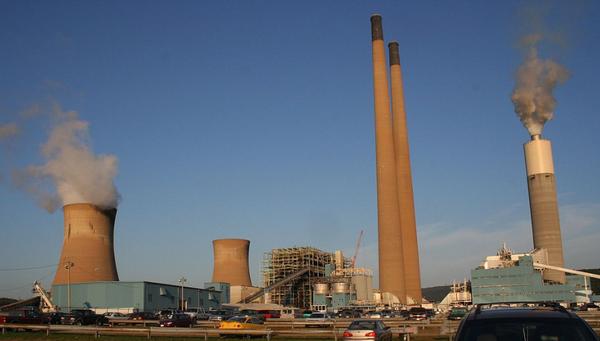
President Trump signed the exemptions for the Mercury and Air Toxics Standards with a proclamation that characterized coal as, “essential to ensuring that our nation’s grid is reliable and that electricity is affordable for the American people, and to promoting our nation’s energy security.”
The exempted coal-fired power plants include Keystone and Conemaugh power plants in Western Pennsylvania, as well as several smaller waste coal plants, including Scrubgrass Generating Plant in Venango County, which burns waste coal to mine cryptocurrency.
There are exemptions also for Fort Martin, Harrison, and Mount Storm power plants in West Virginia, as well as the Cardinal and Miami Fort power plants in Ohio.
The order gives the generating stations a two-year reprieve from meeting the new standards, which were set to go into force in 2027. The administration can renew the extensions later.
Aimed at limiting the spread of the mercury and other hazardous air pollutants, the standards were finalized in July 2024 under the Biden administration. The Biden EPA estimated the new standards would prevent 9,500 pounds of mercury from being emitted into the air between 2028 and 2037.
Infants and young children are most vulnerable to mercury, even in the womb. Prerenatal exposure to mercury through a pregnant mother’s food “has been associated with developmental neurotoxicity and manifests as poor performance on neurobehavioral tests, particularly on tests of attention, fine motor function, language, verbal memory, and visual-spatial ability” among children, the EPA explains.
On April 10, Trump moved to end 15-year-old requirements that big polluters disclose how much carbon dioxide and other greenhouse gases they emit.
On April 11 Trump called for the elimination of the entire scientific research department at NOAA, the agency responsible for oceanic and atmospheric science.
On April 14, Trump said he plans to lay off staff from the Astrogeology Science Center, a national resource for the integration of planetary geoscience, cartography, and remote sensing that NASA relies on for manned space missions and robotic space probes. “These science topics and communication strategies can be used for developing data, interpretations, and decision support tools needed to provide science that resource managers and other stakeholders can use to better understand complex, dynamic natural systems and develop management strategies to plan for and adapt to risks that threaten human communities and natural ecosystems,” Astrogeology explained.
On April 16, Trump redefined the meaning of “harm” with relation to endangered species, making easier for logging, mining and other development to take place in their habitats.
Also on April 16, the nonprofit Center for Biological Diversity sued four Cabinet-level agencies for failing to release information on the Trump administration’s “action plans” to boost the oil industry and other fossil fuel producers by rolling back and eliminating environmental safeguards.
Their lawsuit seeks information from the Department of the Interior, Department of Commerce, the EPA, and Department of Agriculture’s Forest Service. These agencies and the Department of Government Efficiency, or DOGE, have fired thousands of key civil servants and moved to gut rules that prevent pollution, preserve imperiled wildlife and protect human health.
“The Trump administration and DOGE continue to dismantle environmental safeguards across the nation without a modicum of transparency,” said Brett Hartl, government affairs director at the Center for Biological Diversity. “It seems obvious that polluters and other special interests are completely in the driver’s seat and probably ghost writing all of Trump’s pro-fossil fuel directives. Why else would Trump officials be so defiant about illegally keeping the public in the dark?”
Trump Administration Earth Day 2025
On April 22, Earth Day, the EPA announced that it would be firing or reassigning hundreds of staffers, mostly those working on environmental justice, diversity, equity, and inclusion initiatives. The firings were part of the Trump policy of slashing the federal workforce and uprooting programs begun under the Biden administration.
NBC News reported that 280 employees were fired and 175 were reassigned.
Most of the fired workers were in the EPA Office of Environmental Justice and External Civil Rights, the EPA Office of Inclusive Excellence, and EPA regional offices.
Environmental groups have criticized the EPA firings, arguing that these cuts will affect minority and low-income communities more than wealthier ones, and hobble the agency’s ability to address environmental disparities among communities.
“This is just one piece of what I consider an all-out assault on environmental and public health safeguards by this administration,” fumed Thomas Schuster, director of the Sierra Club’s Pennsylvania Chapter.
Health and Human Services Secretary Robert F. Kennedy, Jr. announced a ban on petroleum-based food dyes.
To cap it off, the president tried to assure the country’s nonprofit organizations, many environmental and conservation groups among them, that he was not going to yank their tax-exempt status, despite an earlier comment the seemed to suggest otherwise.
Last Week of Trump’s First 100 Days
Donald J. Trump’s second term in the White House began with a flurry of executive orders, many removing protections that have guarded the planet and its inhabitants for decades.
On April 24, Trump opened the last week of his first 100 days by ordering U.S. government officials to advocate for mining wide swaths of the ocean floor, a position favored by few nations.

The president declared, “It is the policy of the United States to advance United States leadership in seabed mineral development by:
(a) rapidly developing domestic capabilities for the exploration, characterization, collection, and processing of seabed mineral resources through streamlined permitting without compromising environmental and transparency standards;
(b) supporting investment in deep sea science, mapping, and technology;
(c) enhancing coordination among executive departments and agencies with respect to seabed mineral development;
(d) establishing the United States as a global leader in responsible seabed mineral exploration, development technologies, and practices, and as a partner for countries developing seabed mineral resources in areas within their national jurisdictions, including their Exclusive Economic Zones;
(e) creating a robust domestic supply chain for critical minerals derived from seabed resources to support economic growth, reindustrialization, and military preparedness, including through new processing capabilities; and
(f) strengthening partnerships with allies and industry to counter China’s growing influence over seabed mineral resources and to ensure United States companies are well-positioned to support allies and partners interested in developing seabed minerals responsibly in areas within their national jurisdictions, including their EEZs.”
Negotiators are preparing for the entry into force next year of a treaty governing mining and natural resource extraction under ocean waters called the “high seas,” – waters that are in no nation’s EEZ economic zone.
The conservation and sustainable use of marine biodiversity in the high seas has been discussed globally for over 20 years. The oceans cover more than two-thirds of the Earth’s surface, most of it in areas beyond national jurisdiction. The lack of stable legal frameworks governing the biodiverse species in these areas has left them vulnerable to overfishing, climate change, and pollution.
In a burst of multilateralism in June 2023, governments adopted the international legally binding instrument under the United Nations Convention on the Law of the Sea, UNCLOS, on the conservation and sustainable use of marine biological diversity of areas beyond national jurisdiction, known informally as the BBNJ Agreement.
As of late April 2025, the BBNJ Agreement has attracted 113 governments as signatories and 21 have ratified or otherwise approved the agreement and are now considered parties to it. The BBNJ Agreement will enter into force 120 days after the date of deposit of the 60th instrument of acceptance.
At the current pace of ratification, the first meeting on high seas protection and development could convene in late 2026 at the BBNJ Agreement’s Conference of the Parties (COP 1).
Trump Administration Actions on Day 100: April 30, 2025
April 30 was a big day for Trump’s EPA as Administrator Lee Zeldin announced with a flourish the “100 Environmental Accomplishments achieved by EPA in the first 100 days.” They are:
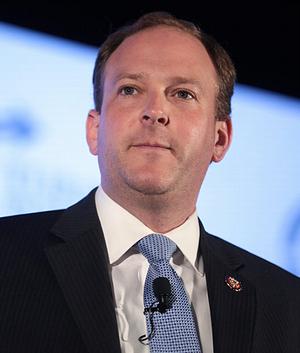
- Issued immediate action items for Mexico to permanently end the Tijuana River sewage crisis.
- Responded quickly to a citizen complaint about discharges into New York’s Hutchinson River; inspected and ordered corrective action.
- Developed a Clean Water Act permit for hotels, condominiums, and apartment complexes to protect water quality in the U.S. Virgin Islands.
- Finalized Arkansas 2022 Section 303(d) list assessing statewide water quality.
- Approved Kansas Triennial Water Quality Standards Package.
- Approved Total Maximum Daily Load (TMDL) plan in South Dakota to protect Big Sioux River quality from E. coli.
- Announced plans to finalize outdated clean water standards for 38 miles of the Delaware River.
- Approved removal of the Drinking Water Beneficial Use Impairment in Wisconsin’s Green Bay and Fox River Area of Concern.
- Advanced Navajo Nation’s first in the country water permitting (“Treatment as a State”) authority.
- Completed Phase 1 hazardous materials clean up after the catastrophic Los Angeles wildfires. EPA cleared 13,612 residential properties and 305 commercial properties, and removed 645 electric and hybrid vehicles and 420 energy storage systems in under 30 days.
- Supported redevelopment at 21 Superfund sites across 13 states.
- Completed a contaminated site cleanup in Hillsborough, New Hampshire, and Stratford, Connecticut.
- Oversaw U.S. Navy’s time-critical removal of 20,000 cubic yards of contaminated soil at the Naval Education Training Center Superfund Site in Newport, Rhode Island.
- Cleared all or a portion of 4 sites from the Superfund National Priorities List.
- Cut two years from the cleanup timeline at West Lake Landfill, a Superfund site in St. Louis, Missouri.
- Completed 55 property cleanups at Region 8 Brownfields. This is 31% of the national goal and 131% of Region 8’s Fiscal Year 2025 goal.
- Completed laboratory work required for selecting a remedy at Lower Darby Creek Area Superfund Site in Pennsylvania. EPA collected 1500 sediment and water samples.
- Responded to a mercury incident in Fremont, Ohio; safely removed and disposed of a 60-pound overpack and 15-pound bucket containing jars of elemental mercury and mercury containing devices.
- Provided air monitoring support at the Chicago Magnesium Casting Co. after a large magnesium fire.
- Completed Emergency Removal Action at the Marion Ohio Mercury Spill site in Ohio.
- Oversaw Navy cleanup operations at Red Hill Fuel Facility in Hawaii, including removal of all sludge and pressure washing at two 12.5 million-gallon tanks.
- Developed a method to detect 40 PFAS compounds in water sources.
- Finalized eight Water Quality Standard Actions for Region 6 states.
- Completed a second round of PFAS sampling at Region 7 Tribal Drinking Water Systems.
- Provided interim PFAS lab certification for Alaska’s Department of Environmental Conservation (ADEC).
- Signed an agreement to connect Joint Base Lewis-McChord residences to municipal water system if PFAS exceeds standards.
- Started Final Remedial Actions for Jackson Ceramix Superfund in Falls Creek Borough, Pennsylvania, with construction to begin in the Spring of 2025.
- Provided training to help New Mexico administer the National Pollutant Discharge Elimination System, a permit program established by EPA under the Clean Water Act to regulate water pollution by controlling point sources that discharge pollutants into U.S. waters.
- Coordinated PFAS drinking water well sampling around Fort Bragg, North Carolina.
- Utilized EPA lab Method 522 to test tribal drinking water systems for PFAS; performed 62 analyses.
- Completed lead testing assistance (3T’s Protocol) for Puerto Rico schools and childcare facilities.
- Reviewed 29 public water systems that had lead action level exceedance notifications in Region 4.
- Completed 25 State Implementation Plans allowing environmental requirements to go into effect faster, 16 of which were backlogged from the previous Administration.
- Finalized air quality rulemaking in the Washington D.C. Area ensuring ozone compliance.
- Conducted ambient air monitoring technical system audits (TSAs) across Region 9.
- Upgraded the RadNet monitoring station in Edison, New Jersey, to detect airborne radioactivity.
- Awarded $165,000 to San Diego Air Pollution Control District for air filters and $1.26M for hydrogen sulfide monitoring to address air quality at the border and concerns with sulfur odors from Tijuana River sewage.
- Promoted clean air quality compliance for new chip manufacturing projects in Phoenix, Arizona.
- 27 Brownfields sites were made Ready for Anticipated Use, boosting property values and economic opportunities in Hartshorne, Oklahoma, Minden, Louisiana, West Memphis, Arkansas, and more.
- Completed 107 assessments of Brownfield properties in Region 7, which is 82% of their Fiscal Year 2025 goal.
- Achieved 21 contaminated Brownfield redevelopment successes in Region 9.
- Held a Superfund Job Training at Missouri’s Ozark Correctional Center.
- Completed review of 81 New Chemicals to ensure they are safe for human health and the environment.
- Conducted a safety review of 14 pesticides to set tolerances to support a safe and reliable food supply.
- Approved 48 pesticides to provide growers with necessary tools while ensuring appropriate restrictions were imposed to protect human health, the environment, and endangered species.
- Proposed 35 significant new use rules (SNURs) for chemical oversight to ensure chemicals do not pose an unreasonable risk to human health or the environment.
- Led a Federal Insecticide, Fungicide, and Rodenticide Act (FIFRA) Week-In-Residence Enforcement Training event for newly hired state inspectors to equip new inspectors with the knowledge necessary to uphold consistent inspection standards.
- Blocked illegal pesticide imports totaling over 200,000 pounds across multiple regions.
- Announced approval of Texas’s clean-air plan to address vehicle emissions and improve air quality in the San Antonio area.
- Issued amended PCB risk-based disposal approvals to expedite repairs at public schools.
- Led a Resource Conservation and Recovery Act (RCRA) State Authorization Conference to strengthen the hazardous waste program across all states.
- Sent mobile drinking water lab to flood-impacted Eastern Kentucky.
- Cleared more than 1,700 orphan containers of oil, propane, and other hazardous materials from land and waterways around the French Broad River after Hurricane Helene.
- Tested over 1,500 private wells in North Carolina’s Buncombe and Watauga counties.
- Assisted in restoring drinking water service to 150,000 people in North Carolina.
- Concluded 297 enforcement cases reducing 15 million pounds of pollution.
- Superfund enforcement secured $296 million worth of cleanups addressing more than 700,000 cubic yards of contamination.
- Completed cleanup at Metals Refining Co. hazardous waste site in Indiana after discovering thirty-two, 55-gallon drums most of which were damaged and some leaking and an additional 200 to 300 miscellaneous containers of hazardous waste.
- Removed approximately 10,000 tons of soil and debris contaminated with asbestos containing material from an unsecured 10-acre property in Indiana.
- Collaborated to replace lead-contaminated soil at Atlanta’s Lindsay Street Park.
- Analyzed children’s blood lead data to improve South Dakota lead prevention efforts.
- Supported tribal waste management programs with multiple trainings to address dangerous materials like refrigerants, mercury switches, PCBs, and petroleum components.
- Conducted 6,000 1-on-1 engagements with communities impacted by fires.
- Held 104 public meetings or community events for fire response updates.
- Provided training, guidance, and support to monitor and cleanup Underground Storage Tanks on Navajo Nation lands.
- Started cleanup of radium-contaminated soil at the Silbert Watch Co. Superfund Site in Elgin, Illinois.
- Developed EPA Method TO-15 to analyze 65 toxic Volatile Organic Compounds in indoor and outdoor air in support of Superfund and Clean Air Act.
- Supported Los Alamos National Lab in transporting hazardous tritium containers for cleanup.
- Conducted lead contamination studies at the Bunker Hill Superfund site.
- Completed the review of the Houston area Ozone Exceptional that allows the state to proceed with their Air Program planning and implementation.
- Worked with U.S. Customs to stop illegal pesticide imports at multiple ports.
- Blocked over 56,000 pounds of unregistered pesticide products from entering through Region 4 ports.
- Provided technical assistance support to communities at 31 Superfund sites across the country.
- Cleanup of the HPI Chemical Products in Missouri, where thousands of containers of pesticide and herbicide containing hazardous substances, pollutants, and contaminants were housed.
- Began a Remedial Investigation of the Historic Potteries site in Trenton, New Jersey.
- Completed 7 property cleanups in Brownfields in the First 100 Days in Region 7.
- Approved updated Comprehensive Conservation & Management plan for the Long Island Sound Partnership, to further restore and protect the Sound.
- Initiated sediment removal projects at the Lower Duwamish Waterway Superfund Site removing approximately 13,700 cubic yards of contaminated sediment.
- Oversaw cleanups at tribal and local jurisdictions under CERCLA and Clean Water Act.
- Supported redevelopment at the Mississippi Phosphate Superfund site with a new treatment plant.
- Completed analysis for wood treating contaminants at 181 residential properties around the Union Pacific Railroad Superfund site in Houston, Texas, with seventy four percent found to be safe for use.
- Managed post-disaster hazardous materials spills in Ohio and North Carolina.
- Inspected and mitigated vapor intrusion impacting Los Angeles from a former Superfund site.
- Obtained court settlement for cleanup work at the San Fernando Valley Superfund Site located in North Hollywood-Burbank to restore a critical drinking water supply for the city of Los Angeles.
- Responded to hydraulic oil spill into a creek in Whitehouse, Ohio.
- Supported voluntary cleanups under consent decrees.
- Began a removal action in Dartmouth, Massachusetts, to excavate and dispose of contaminated soil at three residential properties as part of a larger ongoing cleanup effort.
- Approved eight plans for cleanup and disposal of toxic Polychlorinated Biphenyl (PCB) materials to facilitate reuse and economic development across properties in New England.
- Finalized Native Green Grow Air Permit for large greenhouse facility in North Dakota, providing the Tribe with food security.
- Advanced Native American environmental oversight efforts.
- Granted a Water Infrastructure Finance and Innovation Act (WIFIA) loan to Weber Basin Water Conservancy District, for drinking water infrastructure to over 20% of Utah’s population while creating local jobs to support the projects.
- Supported grant programs to monitor and clean up abandoned USTs.
- Provided federal funds to conduct Highway 24 lead and arsenic clean up in Colorado.
- Helped prevent spread of hazardous materials from warehouse fires including sulfuric acid, nitric acid, hydrochloric acid, sodium hypochlorite, potassium cyanide, sodium cyanide, and lead.
- Collaborated with fire rescue teams in North Carolina to retrieve containers from flooded rivers.
- Provided technical guidance to local water operators, supporting efforts to restore and maintain drinking water systems and other essential services during Hurricane Helene Recovery efforts.
- Completed all residential soil and indoor dust cleanup at the Colorado Smelter Superfund site.
- Completed the 5-Year Review for Puerto Rico’s Corozal Superfund Site, paving the way for its deletion from the CERCLA Superfund National Priority List.
- Submitted a demand for information to a start-up company called “Make Sunsets,” which is launching balloons filled with sulfur dioxide (SO2) seeking to geoengineer the planet and generate “cooling” credits to sell.
- Announced actions to combat PFAS contamination.
Featured image: In the Oval Office, President Donald Trump displays his signature on an executive order. Behind him are two of his Cabinet members – Secretary of Health and Human Services Robert F. Kennedy, Jr., left, and Commerce Secretary Howard Lutnick. February 25, 2025, The White House, Washington, DC. (Official White House photo)
By ENS Staff. Additional reporting by wire services and government agencies, with special acknowledgement to the New York Times series, “The Week In Trump.”

